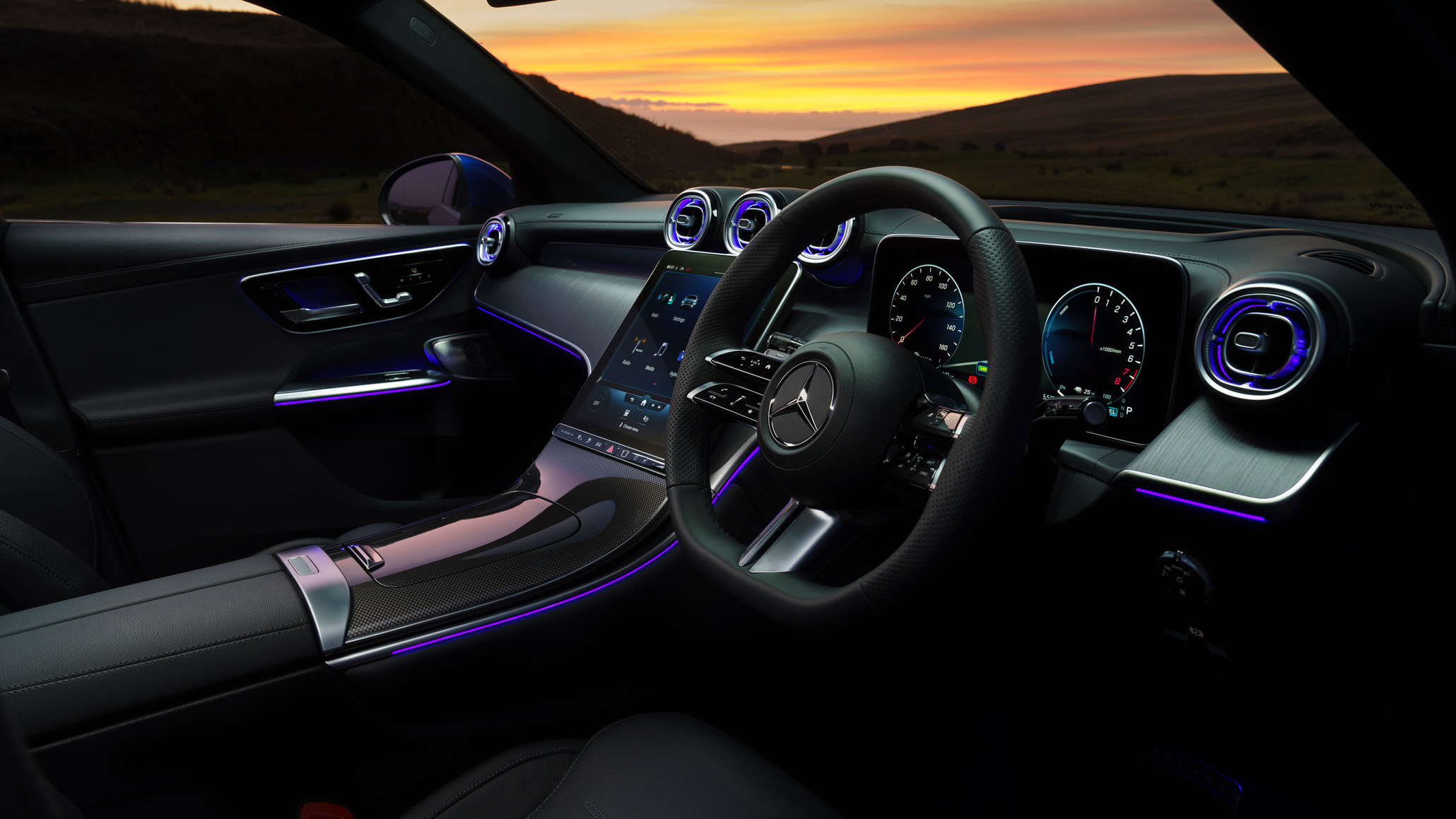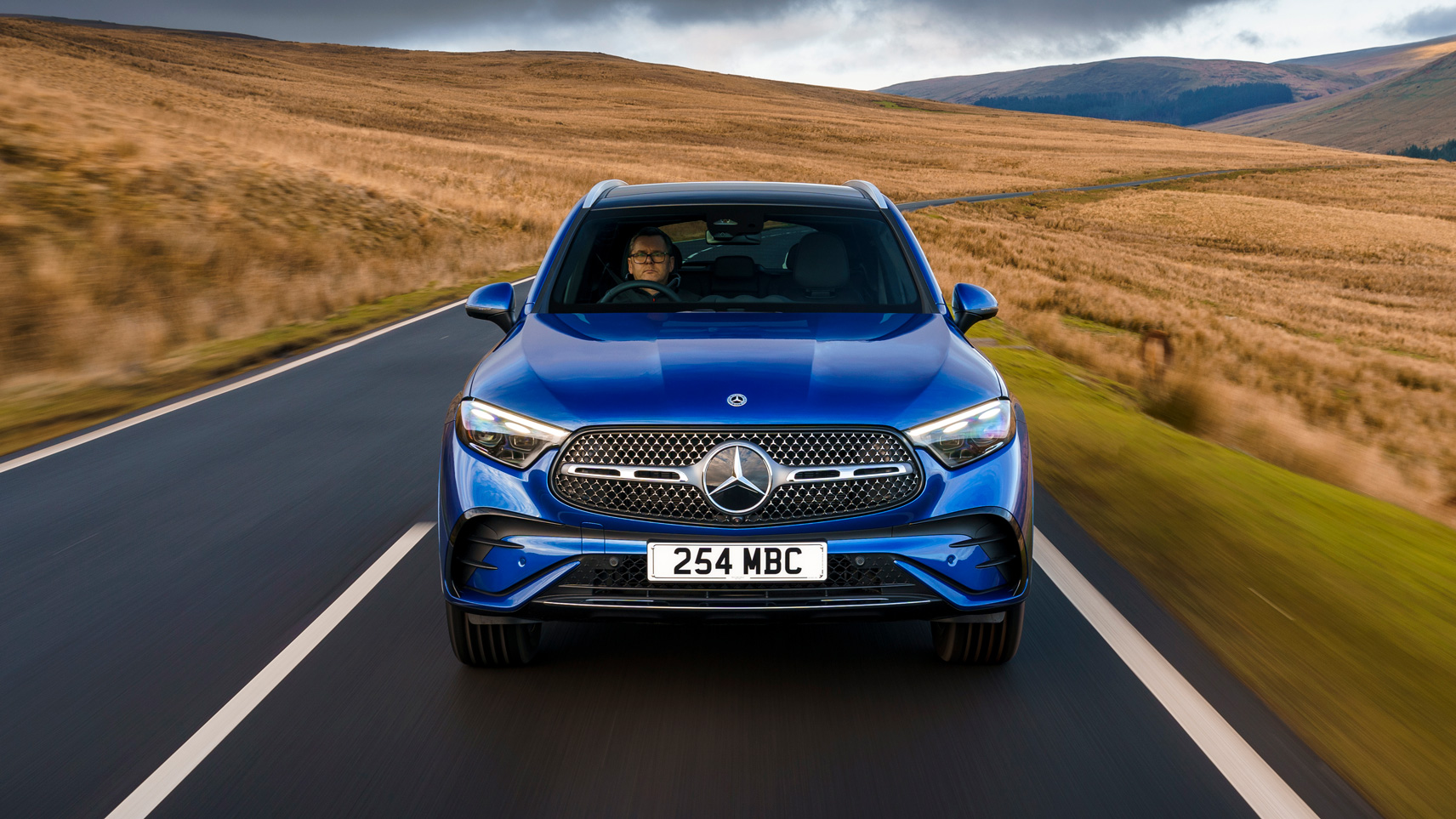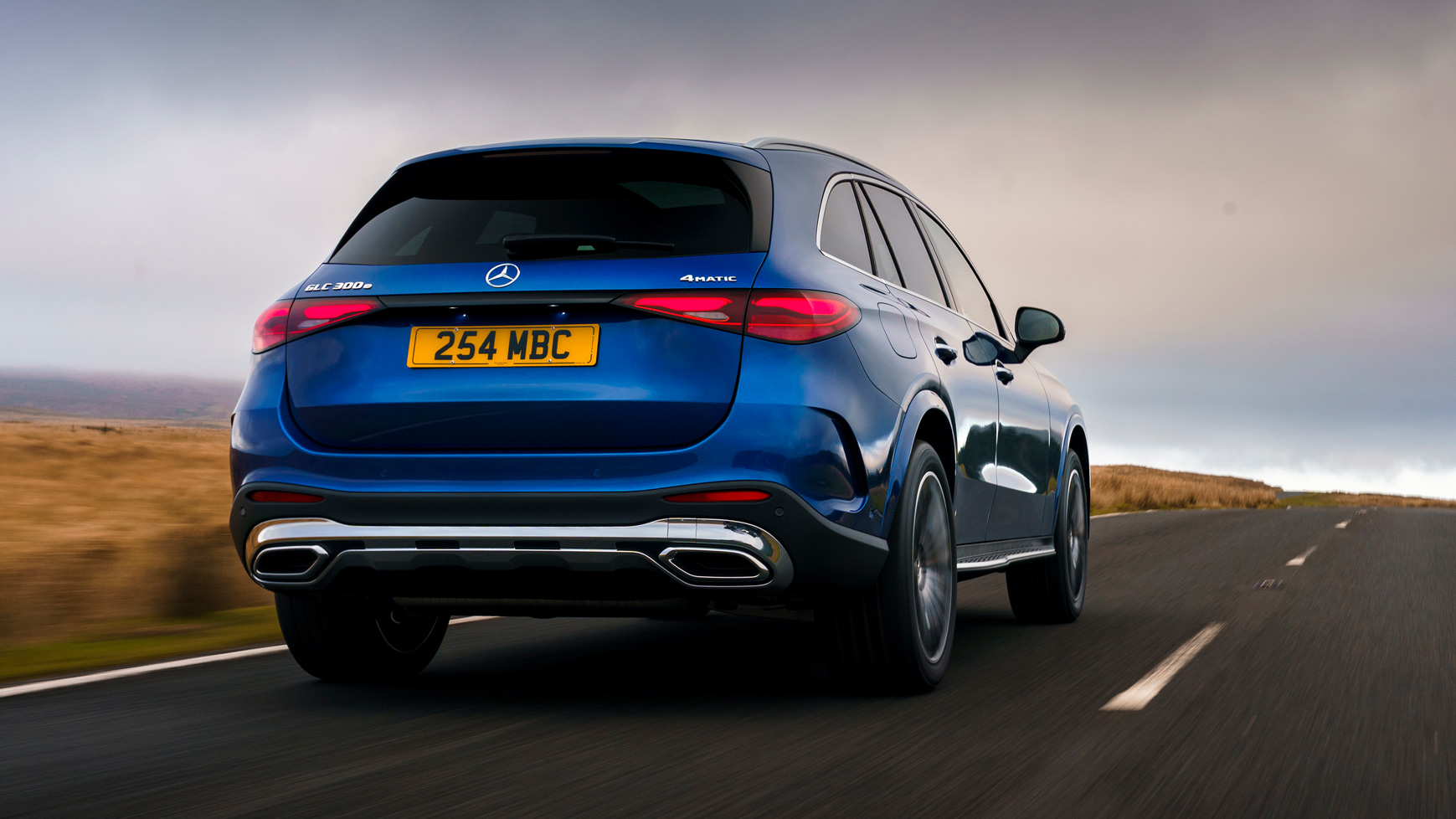
Buying
What should I be paying?
There’s some cheeky stuff going on here. As we’ve mentioned already, you can’t get into a GLC for less than £50,000 – so you’re in for upwards of £650 a month. If you fancy a 300e hybrid you’re going to be paying over £800 a month. And you’re not going to be saving that much money, so that’s £150 a month to feel good about yourself. A gym membership is cheaper. We think. Top Gear doesn’t do gyms.
Costly, but I can’t see what’s cheeky about it.
At this point we’ll do the inevitable and point you at a C-Class Estate. You’re thinking of the hybrid, which in the GLC means over £63,000. In the C-Class Estate the same powertrain is six grand less. And that’s in flagship Premium Plus trim, whereas the GLC is base AMG Line. The cheeky bit is that the hybrid C-Class Estate isn’t available in lesser trims – the saloon is, but a base trim estate would really expose the GLC for the over-priced machine it is.
In other words SUV buyers, Merc has seen you stampeding towards the showroom and worked out the profit margins accordingly. Which also makes it well worth having a look at a BMW X3 xDrive 30e. Seven grand less than the Merc, not quite such a competent hybrid (30-mile range), but decent enough and significantly better to drive.
Talk to me about spec levels.
As mentioned, you can option one of the three trim levels and then run on from there.
Base AMG Line 220d diesels list at £52,880, and there’s a model every few grand to the £75,460 300de. The best compromise if you want a luxury touch is the mid-level AMG Line Premium - well-kitted without being a Christmas tree. The plug-in is the most interesting and potentially useful if you can stretch to it - which just leaves you with the decision as to whether petrol or diesel suits. Go petrol. It’ll make you use electric more, it suits the car’s manners better and having to tell people that your new hybrid is backed up by diesel isn’t great for your street cred.
How’s fuel economy?
The base 220d with mild-hybrid returns 51.4mpg, with the 300 petrol registering 37.2mpg. Once you’re into the plug-in territory, things get complicated thanks to that generous potential EV-only range. The 300de ‘officially’ hits 706.3mpg and the 300e 565 on the nose. They’re obviously pigs-with-wings numbers, but that gives a five per cent benefit-in-kind rate to business users, rather than 33-37 for the mild hybrids.
What really matters is how much you actually plug the thing in, but with the current price of fuel versus electricity, that might end up being a decent motivator to get a home wallbox and get rigorous with the plugging-in. Insurance runs from 40E-41E for the 220d to 47E-48E for the 300e - not startling.
What sort of options will there be?
Various gadgets and gizmos are available as extras on the car, including internal wifi, a new panoramic sunroof, massage seats, head-up display and the ability to connect to your home internet to control things like the central heating. Yep, that’ll be seamless. A new parking package is available with a 360-degree camera, help with manoeuvring and even a ‘transparent bonnet’ feature that will aid getting about at low speeds (an idea nabbed from Land Rover). Plus of course you’ll be able to spec the car with driving safety tech out the wazoo. You couldn't drive into a tree even if you wanted to these days. Don’t try that.
The latest version of Merc’s MBUX software also comes with the car, with all its fancy graphics and connectivity. The in-built satnav is almost worth actually using if you can’t be bothered to connect your phone, and the car will even connect to a number of music streaming providers or tell you the latest news headlines. Exciting stuff.
Great stuff, but will the electric ones tow?
The PHEVs are both rated to tow 2,000kg of braked trailer, which is less than the entry powertrains but impressive for a zero emission capable car if you’re looking for something to hitch up.
Featured

Trending this week
- Car Review
Ferrari Amalfi
- Long Term Review
Is the Suzuki Swift still the best small car money can buy?






